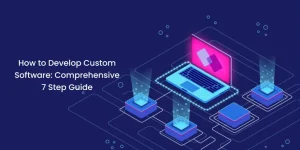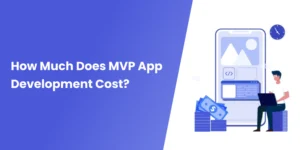What Is MVP in Software Development? Benefits, Process & Real Examples
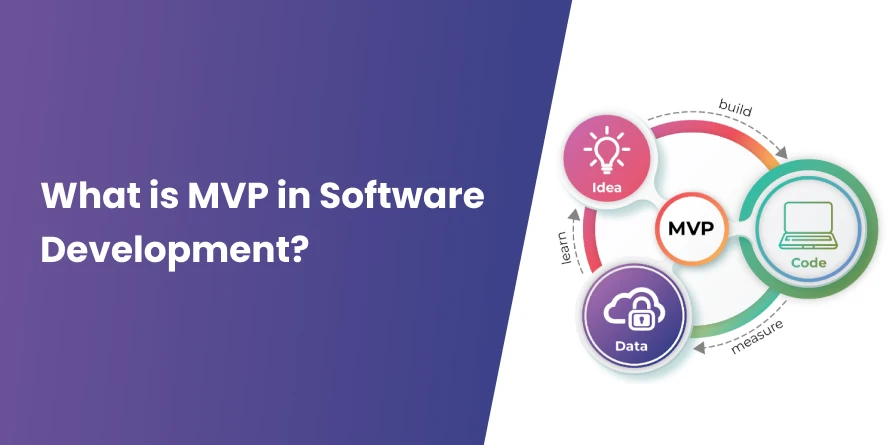
They say an ounce of prevention is worth a pound of cure – and this also true in software development. Launching a product without testing it first can lead to expensive mistakes, especially when time and user attention are limited.
That’s where the Minimal Viable Product (MVP) comes in.
An MVP is not about cutting corners, it’s about building smarter. It’s the strategic answer to one of the biggest challenges in tech: validating your idea without wasting time and money. Before investing months (or years) into development, companies use MVPs to test core functionality, gather real user feedback, and make informed decisions, all while reducing risk.
In this blog, we’ll explain what an MVP is in software development, why it’s important, how to build one, and how successful companies have used it to launch great products. Let’s look at how starting small can lead to something big.
What is MVP in Software Development?
In software development, MVP stands for Minimum Viable Product, a version of a product with just enough core features to solve a specific problem and provide value to early users.
The goal is simple: Build → Launch → Learn → Iterate.
Think of it like opening a restaurant by first selling a few popular dishes from a food truck. It’s not the full dining experience yet, but it’s enough to attract customers, gather feedback, and understand what people really enjoy before investing in a full-scale restaurant.
Let’s take a look at a popular example of MVP development circulating on the internet for years:
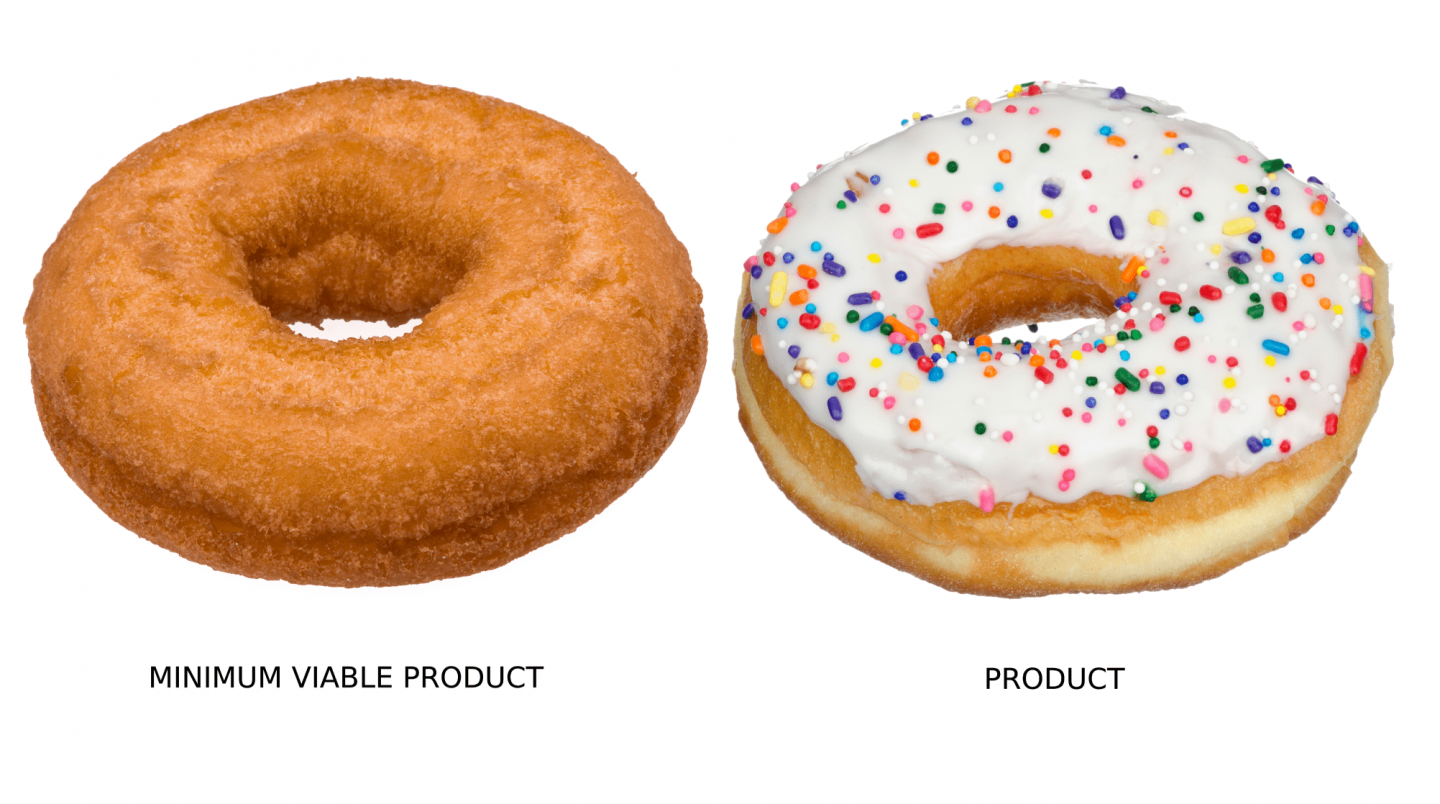
- The startup failure rate is over 90%, and one of the top reasons is building a product no one needs. MVP helps avoid that trap.
- According to CB Insights, 35% of startups fail due to a lack of market need, a mistake MVPs are specifically designed to prevent.
- In the booming $800+ billion global software market, validating ideas early through MVPs can make the difference between scaling fast or sinking early.
An MVP isn’t the end, it’s the beginning of a smarter product journey. When done right, it leads to faster innovation, stronger user insight, and a product that’s built for real market demand.
Key Characteristics of an MVP
Now that we understand what an MVP is and why it matters, let’s look at what makes a product “minimally viable”. These core characteristics are essential whether you’re launching your first app or scaling through custom software development.
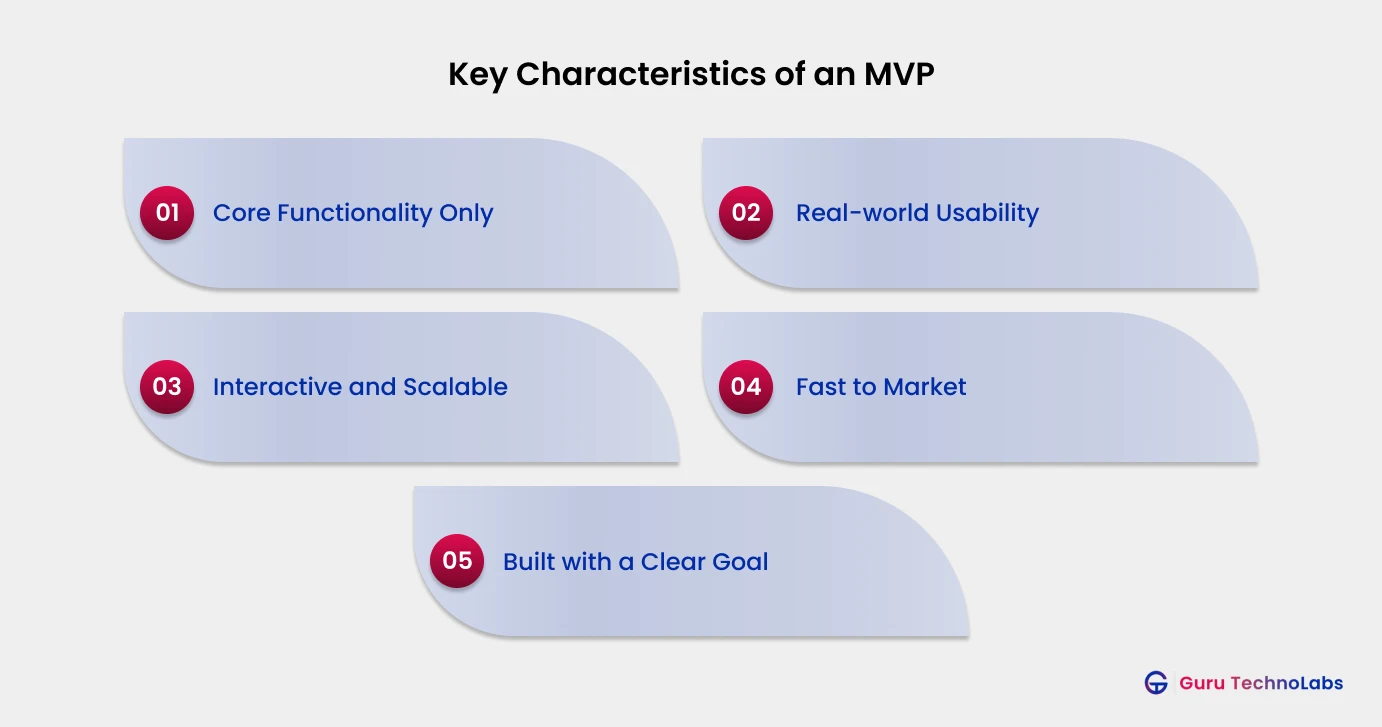
Core Functionality Only
An MVP delivers only the most essential features that solve the user’s main problem. It avoids feature overload and focuses on validating the product’s value.
For instance, Dropbox started with a simple explainer video before even building the product. It showcased value, validated interest, and saved thousands dollars in custom software development.
Real-world Usability
An MVP must be functional and usable, not a prototype or concept. If users can’t interact with it meaningfully, it’s not an MVP.
This is why many startups hire developers who can focus on shipping functional code fast, without over engineering early features.
Interactive and Scalable
A good MVP is built to evolve. User feedback helps guide improvements and scaling.
For instance, Instagram started as a location check-in app. When users gravitated to the photo-sharing feature, the team pivoted because the MVP was flexible enough to follow user behavior.
Fast to Market
Speed is important in today’s competitive tech landscape. An MVP helps you launch faster, test early, and reduce your custom software development cost by avoiding unnecessary features. The goal isn’t to be first – it’s to learn fast.
Built with a Clear Goal
An MVP must have measurable objectives, such as sign-ups, usage, or retention, to guide decisions and iterations.
For development teams or founders looking to build lean, goal-driven products, it’s often smart to hire a dedicated development team that understands MVP methodology and iterative delivery. This approach is especially important when planning an MVP in web development.
Benefits of an MVP in Software Development
In software development, an MVP (minimum viable product) is a streamlined version of a product with just enough features to satisfy early adopters. It allows businesses to test their ideas in the real market before fully committing to large-scale development.
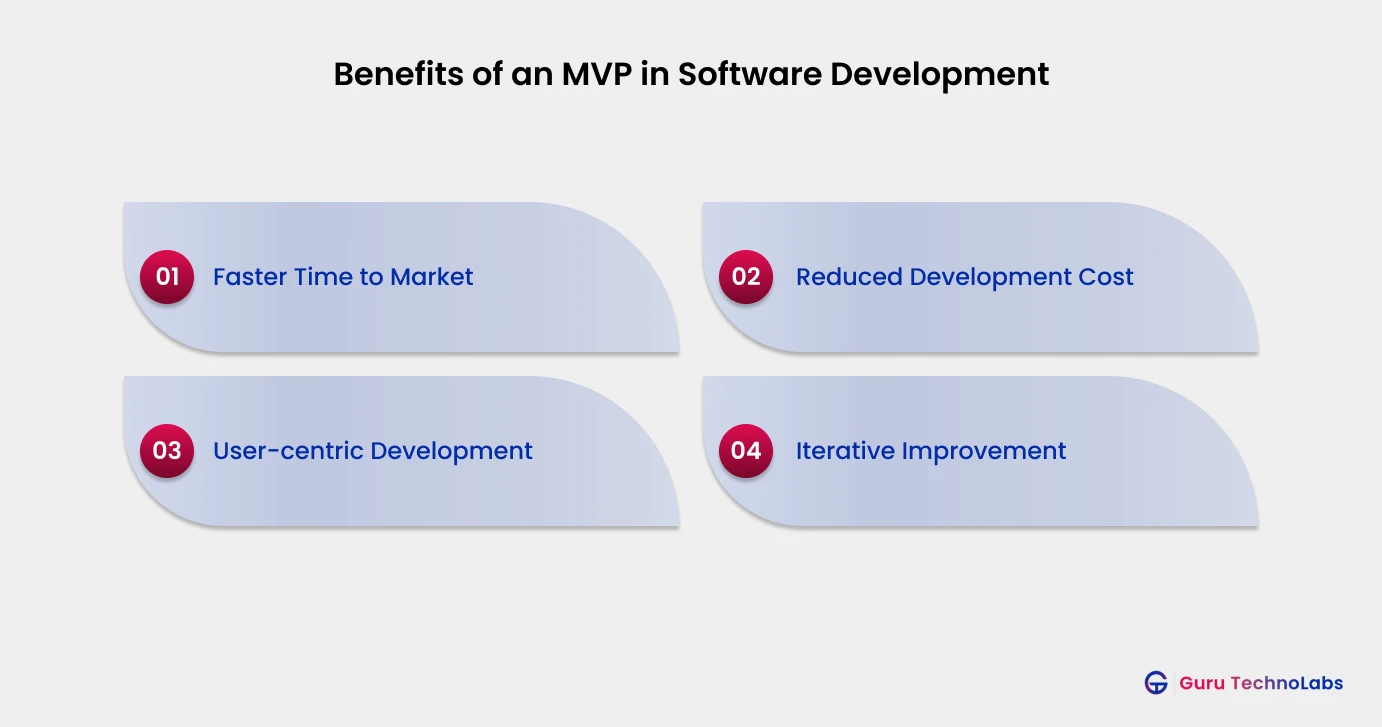
Faster Time to Market
No one wants to spend a year building something users reject in five minutes. An MVP helps you launch quickly and start gathering feedback early.
- You launch faster
- You get feedback sooner
- You start iterating early
Dropbox attracted 75,000+ signups with just a demo video. That’s the power of launching smart and fast.
Reduced Development Cost
An MVP limits initial investment and helps control your MVP development cost, avoiding features users may never need.
With an MVP, you:
- Limit initial development costs
- Avoid wasting resources on features users may never use
- Gain early feedback to guide smart investments
Everpix, a photo-sharing app, had great features but no validated user need. It shut down despite strong engineering.
Outcome? Great product, WRONG audience. They shut down.
User-centric Development
MVPs enable development based on actual user behavior, not assumptions. You learn what users want and what they don’t.
Once your MVP is out there, real users start interacting with it. This gives you data – what they like, what they ignore, where they drop off. Instead of guessing what people want, you learn directly from them.
Key insights include:
- User behaviour trends
- Unexpected use cases
- Feature popularity (or lack thereof)
This leads to development based on actual demand, not assumptions.
Iterative Improvement
MVPs encourage continuous improvement. With every user interaction, you collect insights, refine the product, and stay aligned with market needs.
You build. User responds. You tweak. Repeat.
Instagram’s pivot from check-ins to photo-sharing proves how valuable this loop can be.
So, an MVP isn’t a shortcut, it’s a strategy. It respects your time, your budget, and most importantly, your users. In software development, where the only constant is change, MVPs are your early defense and your strongest offense.
So if you’re building something, start small, learn fast, and grow smarter.
Staying informed about the latest trends in software development can also help shape more effective MVP strategies, ensuring your product aligns with evolving technologies.
How to Build Successful MVP In Software Development?
Launching an MVP isn’t just about building a stripped-down version of your product, it’s about making smart, strategic moves that guide your product toward success. Think of it as laying the first brick of a much bigger structure. You want it strong, balanced, and positioned in the right place.
Let’s walk through the essential steps for building an MVP that actually works in the real world, not just on paper.
Step 1: Define the Problem Your Software Will Solve and Set Target Audience
Every successful product starts with a clear problem. Your MVP should answer one question: What real pain point are we solving, and for whom?
This is where many MVPs either hit the mark or fall flat. If you’re solving a vague or non-existent problem, even the most beautiful UI won’t help.
Ask yourself:
- Who is my target audience?
- What specific issue are they facing?
- How are they currently solving this problem (if at all)?
Once you’ve got your problem and audience crystal clear, you can move forward with confidence, knowing your product has purpose.
Step 2: Identify Key Features
Not all features, just the essential ones.
Your MVP should do one thing exceptionally well. This isn’t the time to think about loyalty points, third-party integrations, or advanced filters. You need to deliver the core value your product promises, and that’s it.
For example, if you’re building a task management app:
- To-do list creation? Yes.
- AI-powered productivity insights? Save that for later.
This step is about focus. Your goal is to strip your idea down to its most impactful elements, then build from there.
Step 3: Build a Prototype or Wireframe
Before you write a single line of code, sketch it out.
Wireframes and prototypes help visualize your MVP and align your team on user flows, feature placement, and UI/UX basics. Think of this as your MVP’s blueprint, the clearer it is, the smoother development will be.
You can use tools like Figma, Adobe XD, or even basic paper sketches to bring your concept to life before it becomes real software.
Step 4: Develop the MVP
Now comes the build, but keep it lean.
Start coding only after your prototype is validated. Use a tech stack that’s scalable, maintainable, and one your team is confident with. Whether you go with a cross-platform framework or a native build depends on your audience and long-term goals.
At this stage, speed and stability matter equally:
- Don’t over-engineer.
- Don’t cut corners.
- Focus on performance, usability, and core functionality.
Also Read: Top 10 Software Development Methodologies
Step 5: Test with Real Users
This is where the real learning begins.
Once your MVP is functional, it’s time to put it in front of real users, not friends, not family, but actual potential customers. You want feedback that’s honest, specific, and actionable.
Ask questions like:
- What do you like/dislike about the product?
- What would you change or improve?
Testing reveals gaps that planning can’t. It’s the bridge between what you thought users wanted and what they actually want.
Step 5: Test with Real Users
No MVP is perfect, and that’s the point.
The final step is to learn, adapt, and improve. Use all the feedback and data collected to make smart adjustments. This might mean:
- Fixing usability issues
- Refining feature functionality
- Pivoting your core offering
This cycle — Build → Measure → Learn — is the heart of MVP success. The best products aren’t built in one shot. They evolve, improve, and align more closely with user needs over time.
Challenges to Take Care of the MVP in Software Development
While MVPs are your best bet for building smarter and faster, let’s not sugarcoat it – creating a successful MVP comes with its hurdles. Especially in today’s hyper-competitive market, where MVP app development is often the first impression you make, a misstep can cost you dearly.
Here are the challenges you need to stay sharp about:
Defining the Right MVP Scope
One of the most common pitfalls is going too broad or too bare.
Many founders either try to cram every feature into the MVP or strip it down so much that it loses value. The key is balance. Your MVP should solve a real user problem, nothing more, nothing less.
For example, if you’re working on on-demand app ideas like a home cleaning service, make sure the core experience — booking a cleaner — is flawless before adding features like ratings or wallet payments.
Misunderstanding User Needs
You’re not building an MVP for yourself. You are building it for your users.
A major challenge in MVP app development is skipping deep user research. Just because an idea makes sense to you doesn’t mean it resonates with your target audience.
Startups often skip interviews, surveys, or basic competitor analysis, and as a result, they build something no one needs.
Understanding the Timeline
There’s a myth that MVPs are “quick and dirty”. But rushing without direction can lead to technical debt, buggy launches, and a bad first impression.
You still need:
- UX design that’s intuitive
- QA testing to avoid crashes
- A feedback loop that functions from day one
Especially in competitive spaces like eCommerce and on-demand, users are comparing your MVP with polished products. You get one shot – make it count.
Choosing the Wrong Tech Stack
Choosing the wrong tech stack early can haunt your future scaling efforts.
Many developers pick frameworks that are fast for MVP but break when the app starts growing. Or worse, they choose a stack they’re unfamiliar with just because it’s trendy.
Scalability matters in MVP software development. So does developers’ familiarity. Go for a stack that’s flexible, well-supported, and aligned with your long-term goals.
Real-World MVP Examples from Top Tech Companies
For inspiration and learning, here we are going to enlist stories of some of the most popular brands that once were humble and have now become household names:
Uber
Uber began in 2009 as a simple MVP called UberCab – it connected riders with black car drivers via an iPhone app in San Francisco. That’s it. No live tracking, no fare-splitting, no pool rides.
Fast forward to today: Uber operates in more than 70 countries, boasts 131 million active users, and processes more than 25 million rides per day.
MVP to mobility giant – in just over a decade.
Airbnb
To validate their idea, Airbnb’s founders rented out their apartment with air mattresses during a sold-out event in San Francisco. Their MVP? A basic website offering “Air Bed & Breakfast”.
Now, Airbnb has over 7 million listings in 220+ countries and a market cap that’s floated above $90 billion. All from an idea born out of rent money trouble.
Netflix
Netflix’s MVP in 1997 wasn’t streaming – it was a DVD rental-by-mail service with a pay-per-rental model. No monthly subscription, no original content. The founders just wanted to test whether people were willing to rent DVDs online.
Today? Over 270 million paid subscribers, a content budget exceeding $17 billion, and a cultural footprint that’s changed entertainment forever.
Launched as “Thefacebook” in 2004, the original MVP was restricted to Harvard students and offered just basic profile creation and networking features. Within a month, more than half the undergrad population had signed up.
Today, Meta’s flagship platform has over 3 million monthly active users, spanning nearly every country on the planet.
Turo
Turo, once known as RelayRides in 2010, started as a hyper-local peer car-sharing MVP in Boston, working with just a handful of cars and users. There were no flashy features – just basic listings and manual key advantages.
As of now, Turo operates in multiple countries, has more than 350,000 active vehicles, and is often dubbed “the Airbnb of cars”.
Slack
Before it became the go-to collaboration tool, Slack was an internal messaging system built by a gaming startup (Tiny Speck) to communicate during game development. The team realized the chat tool had more potential than their game.
They polished it slightly and released an MVP in 2013. Within 24 hours, 8,000 companies signed up – Slack now serves over 100,000 paying organizations globally.
Amazon
Jeff Bezos launched Amazon in 1995 as an online bookstore, with no same-day delivery, no Prime, and no AI algorithms. The MVP tested one thing: would people buy books online? It worked.
No surprise that today Amazon sells everything from groceries to cloud computing services and generates over $575 billion in annual revenue, dominating the global eCommerce.
MVP vs Prototype vs PoC: What’s the Difference?
PoC (Proof of Concept) is a technical experiment to validate feasibility, not something users will see. It proves the core concept can be built – think of it as the “yes/no” stage.
Prototype is a visual or interactive mock-up of a product – it shows how the app might look or function, but isn’t fully functional. It’s mainly used to explore design and user flow, often shared for early feedback.
An MVP is the first working version of the product, with just enough features to solve the main problem and be used by early adopters. It’s built for real users, collects real feedback, and lays the foundation for future development.
Final Thoughts
Developing an MVP makes sense in all circumstances, especially when startups or even well-established companies want to test and validate a concept before the final launch. Doing so saves time, money, and resources that might well otherwise be wasted building a product that no one is interested in.
Investing in an MVP also allows companies to check the best direction for the product based on actual use of the MVP by the customers. To take your idea from MVP to a product that blows up the market, you just need to follow certain steps, refer to these popular brands’ business models, and conduct research.
With the best MVP app development services in the market, Guru TechnoLabs is always ready to support you at any stage of the custom MVP software development process. Reach out to us and experience how your dream product can be built with precision, excellence, and cutting-edge technology.




